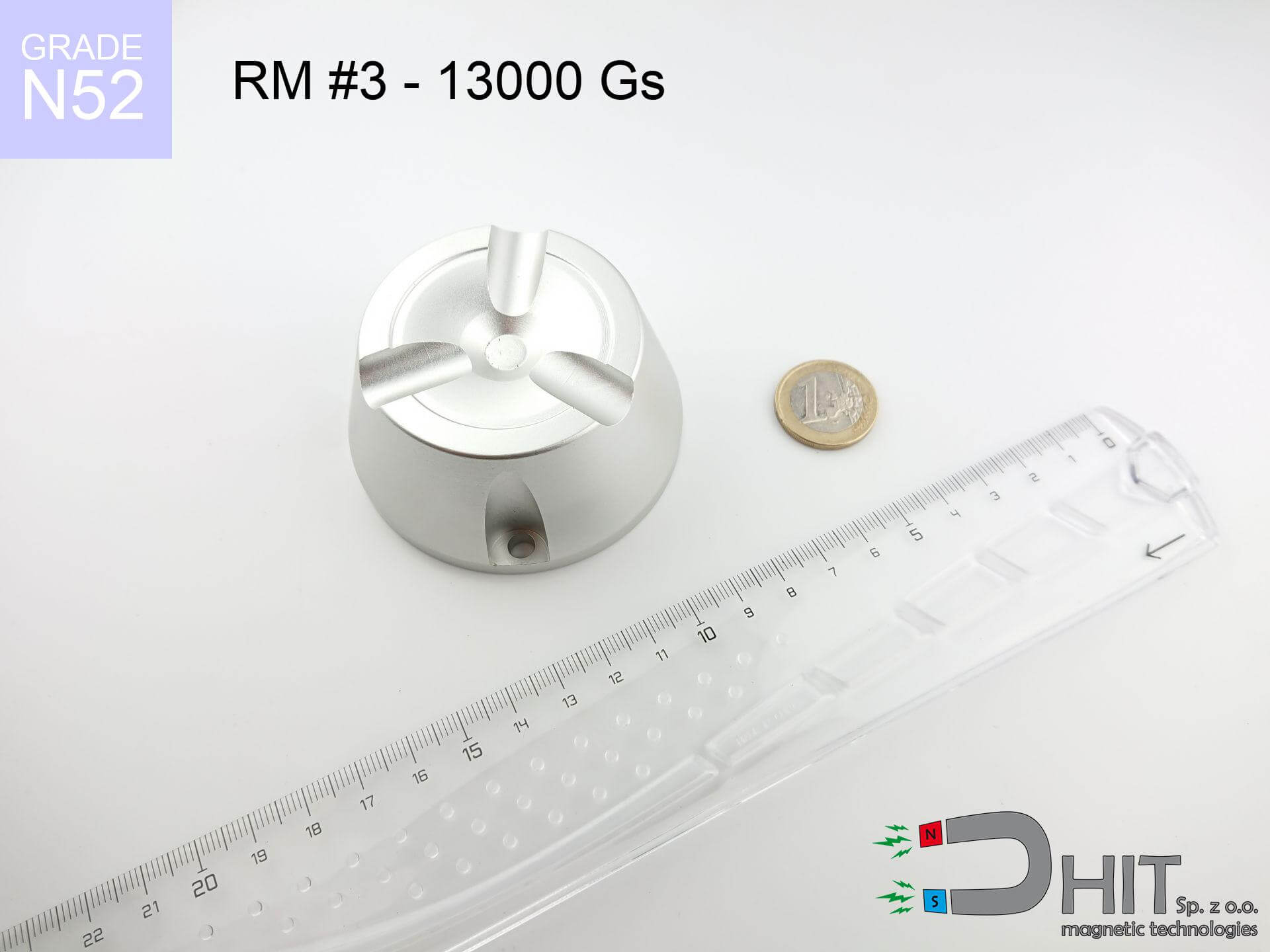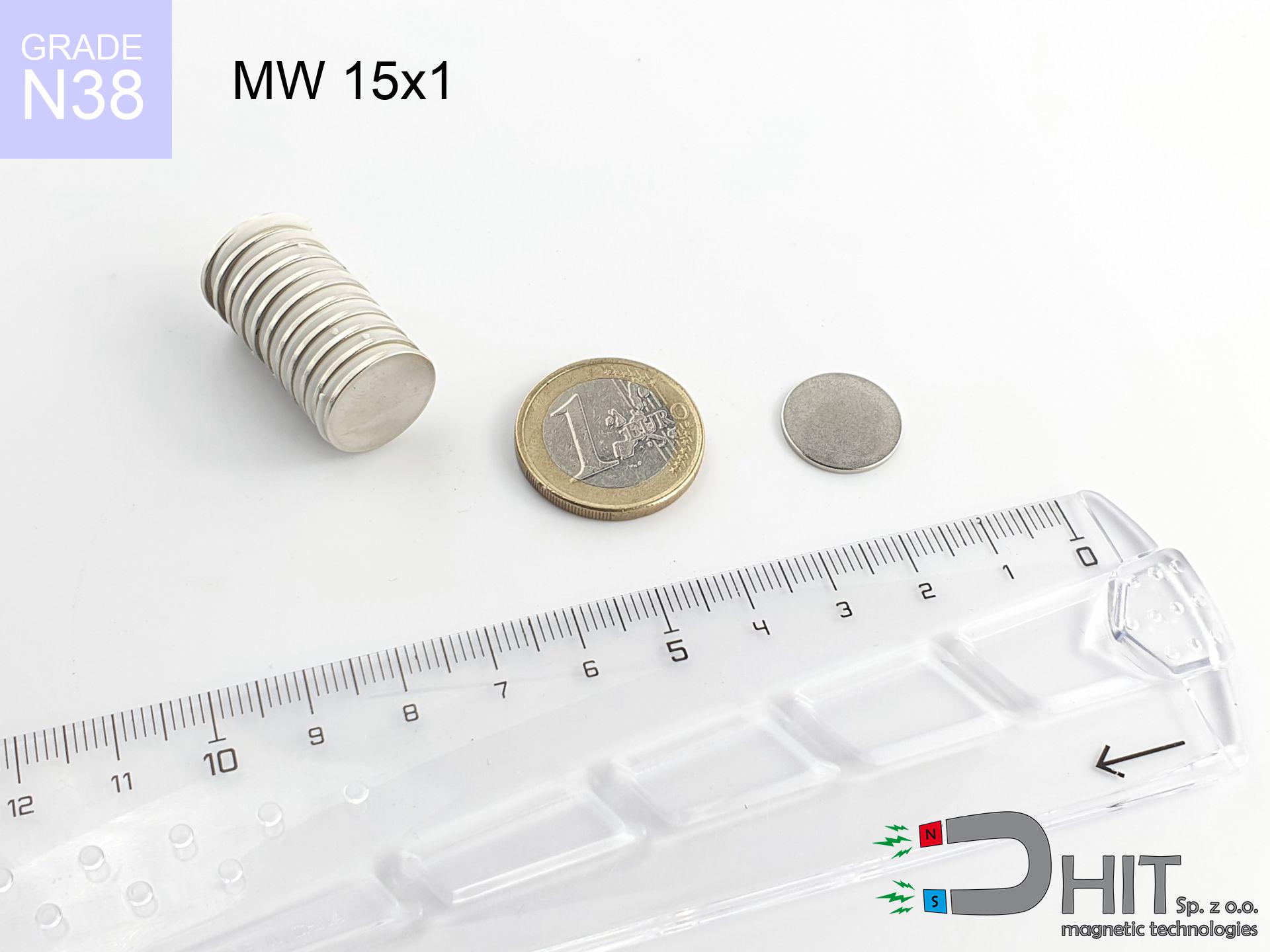RM R3 - 13000 Gs / N52 - magnetic distributor
magnetic distributor
Catalog no 280253
GTIN: 5906301814443
Weight
0.01 g
Magnetization Direction
↑ axial
Coating
[NiCuNi] nickel
167.28 ZŁ with VAT / pcs + price for transport
136.00 ZŁ net + 23% VAT / pcs
bulk discounts:
Need more?Do you have questions?
Pick up the phone and ask
+48 22 499 98 98
or let us know via
inquiry form
the contact page.
Parameters along with form of a magnet can be estimated on our
magnetic mass calculator.
Order by 14:00 and we’ll ship today!
Magnetic properties of material N52
Physical properties of sintered neodymium magnets Nd2Fe14B at 20°C
Shopping tips
Advantages and disadvantages of NdFeB magnets.
Besides their remarkable magnetic power, neodymium magnets offer the following advantages:
- They have unchanged lifting capacity, and over nearly 10 years their attraction force decreases symbolically – ~1% (according to theory),
- They have excellent resistance to magnetic field loss when exposed to external magnetic sources,
- In other words, due to the glossy surface of nickel, the element gains visual value,
- Neodymium magnets create maximum magnetic induction on a small area, which ensures high operational effectiveness,
- Due to their durability and thermal resistance, neodymium magnets can operate (depending on the shape) even at high temperatures reaching 230°C or more...
- Thanks to freedom in constructing and the capacity to modify to client solutions,
- Wide application in electronics industry – they are utilized in HDD drives, electric drive systems, advanced medical instruments, and complex engineering applications.
- Relatively small size with high pulling force – neodymium magnets offer strong magnetic field in small dimensions, which enables their usage in small systems
What to avoid - cons of neodymium magnets: weaknesses and usage proposals
- Susceptibility to cracking is one of their disadvantages. Upon strong impact they can fracture. We advise keeping them in a strong case, which not only protects them against impacts but also raises their durability
- We warn that neodymium magnets can lose their strength at high temperatures. To prevent this, we suggest our specialized [AH] magnets, which work effectively even at 230°C.
- Magnets exposed to a humid environment can rust. Therefore during using outdoors, we recommend using waterproof magnets made of rubber, plastic or other material resistant to moisture
- We suggest cover - magnetic mechanism, due to difficulties in realizing threads inside the magnet and complex forms.
- Potential hazard related to microscopic parts of magnets can be dangerous, when accidentally swallowed, which gains importance in the context of child safety. It is also worth noting that small components of these devices can be problematic in diagnostics medical in case of swallowing.
- Due to complex production process, their price is relatively high,
Maximum lifting capacity of the magnet – what affects it?
The force parameter is a theoretical maximum value performed under standard conditions:
- with the application of a sheet made of special test steel, guaranteeing full magnetic saturation
- with a thickness of at least 10 mm
- characterized by smoothness
- without any insulating layer between the magnet and steel
- for force applied at a right angle (pull-off, not shear)
- in temp. approx. 20°C
Practical lifting capacity: influencing factors
Please note that the application force will differ subject to the following factors, starting with the most relevant:
- Space between surfaces – even a fraction of a millimeter of distance (caused e.g. by veneer or dirt) significantly weakens the pulling force, often by half at just 0.5 mm.
- Force direction – remember that the magnet has greatest strength perpendicularly. Under shear forces, the holding force drops significantly, often to levels of 20-30% of the maximum value.
- Wall thickness – the thinner the sheet, the weaker the hold. Magnetic flux passes through the material instead of converting into lifting capacity.
- Steel type – low-carbon steel gives the best results. Alloy admixtures lower magnetic properties and lifting capacity.
- Surface finish – ideal contact is possible only on polished steel. Any scratches and bumps reduce the real contact area, weakening the magnet.
- Heat – neodymium magnets have a negative temperature coefficient. When it is hot they are weaker, and at low temperatures they can be stronger (up to a certain limit).
* Holding force was tested on a smooth steel plate of 20 mm thickness, when a perpendicular force was applied, whereas under attempts to slide the magnet the load capacity is reduced by as much as fivefold. Moreover, even a small distance {between} the magnet’s surface and the plate lowers the holding force.
Safe handling of NdFeB magnets
Demagnetization risk
Regular neodymium magnets (N-type) lose power when the temperature goes above 80°C. This process is irreversible.
Protective goggles
Protect your eyes. Magnets can fracture upon violent connection, ejecting sharp fragments into the air. Eye protection is mandatory.
Physical harm
Pinching hazard: The pulling power is so great that it can cause hematomas, pinching, and even bone fractures. Use thick gloves.
Metal Allergy
It is widely known that nickel (the usual finish) is a potent allergen. If your skin reacts to metals, prevent touching magnets with bare hands or choose encased magnets.
Caution required
Before use, check safety instructions. Sudden snapping can destroy the magnet or injure your hand. Be predictive.
Pacemakers
Patients with a ICD should maintain an absolute distance from magnets. The magnetic field can stop the functioning of the implant.
Fire warning
Dust generated during machining of magnets is flammable. Do not drill into magnets without proper cooling and knowledge.
Protect data
Avoid bringing magnets close to a purse, computer, or screen. The magnetism can irreversibly ruin these devices and wipe information from cards.
Swallowing risk
Always keep magnets away from children. Risk of swallowing is high, and the effects of magnets connecting inside the body are fatal.
Precision electronics
Note: rare earth magnets produce a field that interferes with sensitive sensors. Maintain a safe distance from your mobile, device, and GPS.
Important!
Learn more about hazards in the article: Magnet Safety Guide.






![UI 45x13x5 [M301] / N38 - badge holder UI 45x13x5 [M301] / N38 - badge holder](https://cdn3.dhit.pl/graphics/products/ui45x13x5-m301-vud.jpg)

